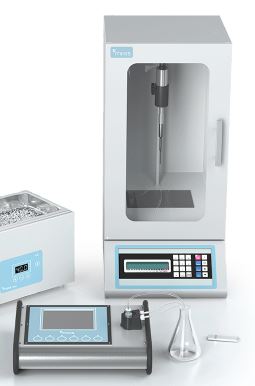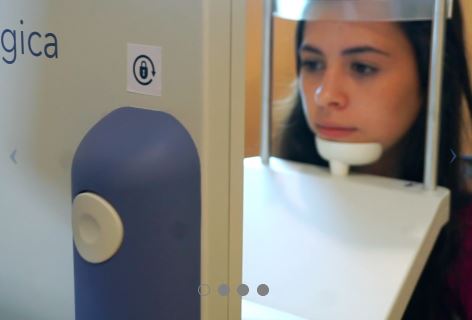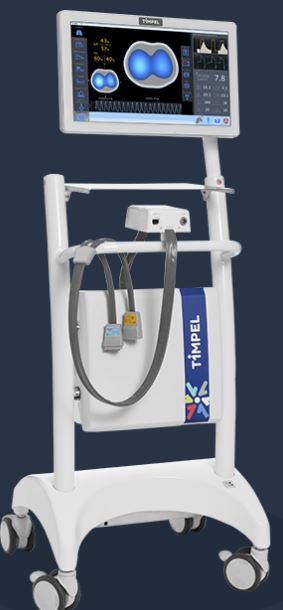Novel Device Market Authorizations: MIRIS Human Milk Analyzer, SEM Scanner for pressure ulcer, EyeBOX for concussion, ENLIGHT 1810 for mechanical ventilation

MIRIS Human Milk Analyzer
Miris AB
INDICATION FOR USE: Quantitatively measures the concentration of fat, carbohydrate, and protein in human milk. The Miris HMA also provides calculated values for total solids and energy. These measurements, in conjunction with other clinical assessments, may be used to aid in the nutritional management of newborns, including preterm, and infants. This device is intended for use in healthcare by trained healthcare personnel at clinical laboratories.
ADDRESSING UNMET NEED:
- Some infants — including those who may be born preterm or have certain health conditions — may need additional nutrients in order to support their optimal growth
- Doctors have access to test to analyze nutrients in breast milk to aid parents and healthcare providers
DESCRIPTION: Breast Milk Macronutrients Test System
- Intended to quantitatively measure fat, protein, and total carbohydrate content in human breast milk. These measurements, in conjunction with other clinical assessments, may be used to aid in the nutritional management of infants
SAFETY AND EFFECTIVENESS:
- N= 112 samples of human milk; comparison of machine vs expected values
- Device effective at determining levels of protein, fat and carbohydrate in the milk
- However, certain medications taken by nursing mother could interfere with test’s ability
RISKS AND MITIGATIONS:
- Incorrect test results: General controls and special controls
- Incorrect action based on test results: General controls and special controls
REGULATORY PATHWAY: De Novo request
- Regulation Number: 21 CFR 862.1493
- Regulation Name: Breast milk macronutrients test system
- Regulatory Class: Class II
- Product Code: QEI

SEM Scanner (Model 200) for Pressure Ulcers
Bruin Biometrics
INDICATION FOR USE: Intended to be used by healthcare professionals as an adjunct to standard of care when assessing the heels and sacrum of patients who are at increased risk for pressure ulcers
DESCRIPTION: Pressure ulcer management tool
- Prescription device intended for patients at risk of developing pressure ulcers. The device provides output that supports a user’s decision to increase intervention. The device is an adjunct tool for pressure ulcer management that is not intended for detection or diagnostic purposes.
RISKS & MITIGATIONS:
- Class I (general) controls provide reasonable assurance of safety and effectiveness
- Identified risks to health are adverse tissue reaction, transmission of infection between patients, electromagnetic interference with patient monitoring equipment, electrical shock
REGULATORY PATHWAY: De Novo request
- Regulation Number: 21 CFR 876.2100
- Regulation Name: Pressure ulcer management tool
- Regulatory Class: Class I
- Product Code: QEF

EyeBOX
Oculogica
INDICATION FOR USE: Intended to measure and analyze eye movements as an aid in the diagnosis of concussion within one week of head injury in patients 5 through 67 years of age in conjunction with a standard neurological assessment of concussion.
A negative EyeBOX classification may correspond to eye movement that is consistent with a lack of concussion.
A positive EyeBOX classification corresponds to eye movement that may be present in both patients with or without concussion.
DESCRIPTION: Traumatic brain injury eye movement assessment aid
- Prescription device that uses a patient’s tracked eye movements to provide an interpretation of the functional condition of the patient’s brain. This device is an assessment aid that is not intended for standalone detection or diagnostic purposes.
RISKS AND MITIGATIONS:
- Incorrect or misinterpreted results, including: False positive (brain injury when in fact none is present), False negative (no brain injury when in fact brain injury is present): Clinical performance testing, Software verification, validation, and hazard analysis; Labeling
- Interference with other devices: Electromagnetic compatibility (EMC) testing
Software verification, validation, and hazard analysis - Electrical shock or burn: Electrical safety testing, Software verification, validation, and hazard analysis
- Adverse tissue reaction: Biocompatibility evaluation
- Eye hazard or injury: Light hazard assessment
REGULATORY PATHWAY: De Novo request
- Regulation Number: 21 CFR 882.1455
- Regulation Name: Traumatic brain injury eye movement assessment aid
- Regulatory Class: Class II
- Product Code: QEA

ENLIGHT 1810 Ventilatory Device
Timpel
INDICATION FOR USE: Non-invasive, non-radiation medical device that provides information of local impedance variation within a cross-section of a patient’s thorax. This information is presented to the clinician user as an adjunctive tool to other clinical information in order to support the user’s assessment of variations in regional air content within a cross section of a patient’s lungs.
It is intended for mechanically ventilated adult patients in a hospital setting, whose thorax perimeter is within the range of 78-122 cm.
DESCRIPTION: Ventilatory electrical impedance tomograph
- Prescription non-invasive, non-radiological ventilatory device that provides an assessment of local impedance variation within a cross-section of a patient’s thorax
RISKS AND MITIGATIONS:
- Adverse tissue reaction: Biocompatibility evaluation
- Electromagnetic interference with other devices: Electromagnetic compatibility testing, Infection Reprocessing validation, Labeling
- Inaccurate images due to either device hardware or software failure/malfunction: Software verification, validation, hazard analysis, Non-clinical performance testing, Labeling
- Electrical shock injury or thermal injury: Electrical, thermal, and mechanical safety testing; Software verification, validation and hazard analysis; Non-clinical performance testing; Labeling
REGULATORY PATHWAY: De Novo request
- 21 CFR 868.1505
- Regulation Name: Ventilatory electrical impedance tomograph
- Regulatory Class: Class II
- Product Code: QEB
Image credits: Miris, Bruin Biometrics, Oculogica, Timpel